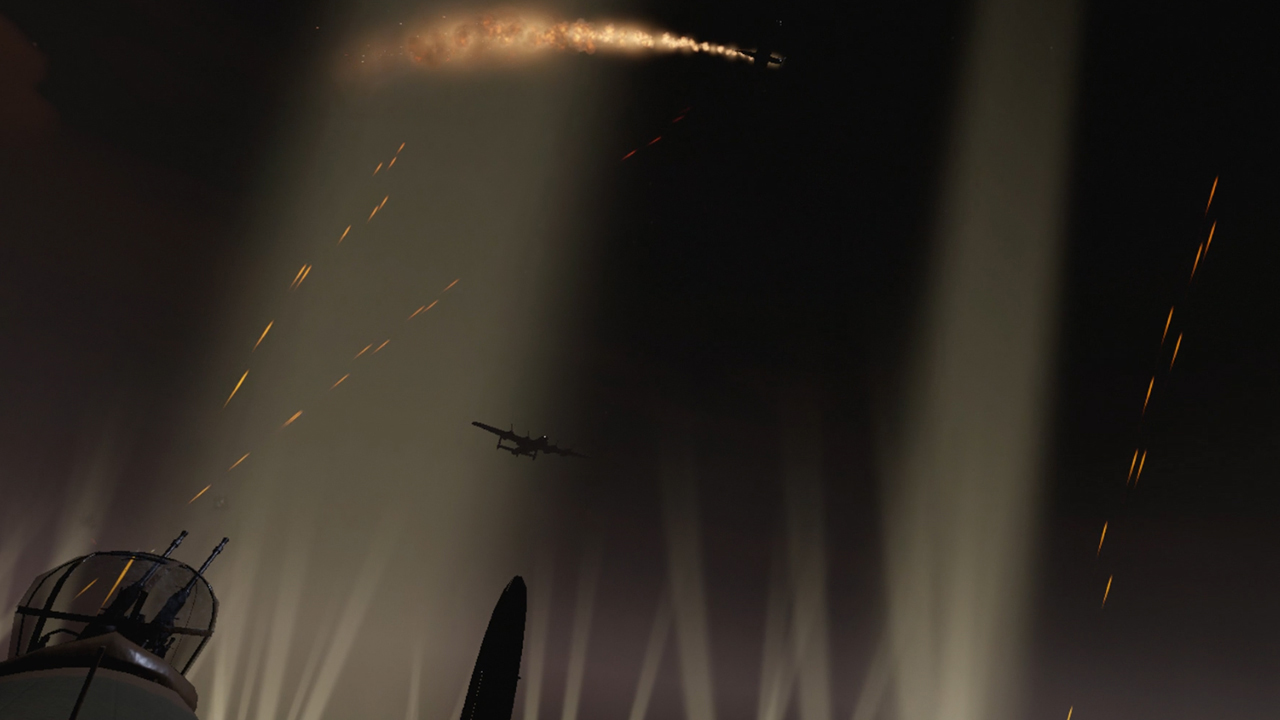Geoffrey Payne, a WWII Royal Air Force veteran, steps into the past using VR.
Geoffrey Payne was a fresh-faced 19-year-old kid when he found himself serving in the British armed forces as a spare rear gunner on a Royal Air Force Lancaster Bomber during WWII. On his very first mission, the gunnery leader approached Payne and told him that the regular gunner was ill, which meant that Payne would be taking his place.
“We were all young terrified lads but we were doing what it took to keep Britain free from Nazi clutches,” said Payne in an interview with the Sunday Post.
Today, Payne is a 93-year-old WWII veteran who hasn’t sat in a gunner’s seat since the war. Thanks to a BBC VR project, however, Payne was able to use a VR headset to transport himself back to September 3rd, 1943 and sit behind the guns of that cramped gunner pod one more time in an incredible VR experienced called 1943 Berlin Blitz.
Once in his VR headset, Payne was able experience everything he witnessed 74 years ago during a deadly bombing mission. The visuals provide an authentic sense of chaos, with darkness and red lights from targeting equipment barely lighting up the area around you. Gaze out the windows and you’ll see German master searchlights scanning the night skies looking for British planes as explosions, smoke, and gunfire all bombard your aircraft. 1943 Berlin Blitz even uses actual radio chatter from WWII pilots during their missions. At one point you can hear the pilots haunting observations over the hum of the planes propellers; “All we can see now is a wall of searchlights.”
Payne, who was visually-moved by the VR experience, spoke about being back in the gunner pod, stating, “I was calm – quit calm, but it came on to me and I was thinking very much about it.”
In total, Payne flew 30 missions as a rear gunner – each of which considered to be a suicide run with the odds of survival at just 50%.

Image Credit: BBC Media Applications Technology
To make matters worse for Payne, the confined gunning pod of the Lancaster bomber meant that he couldn’t wear a parachute. Payne knew that if they had to bail out of the plane, he would have to scramble out of the tight quarters of the gunner’s pod, find his parachute (which was kept in the fuselage), properly strap himself in, and then look for an exit out to jump out – all while the plane was spinning out of control towards the ground or on fire.
Losing his composure at any moment or missing any of those steps would mean certain death for Payne.
“I had that feeling. I had that tickling stomach,” said Payne when asked about those moments in VR, explaining how all of those feelings of anxiety and memories came rushing back. He talked specifically about seeing beams of master searchlights lighting up the sky, saying, “frightening those were.”
“This film is a wonderful example of how VR can bring the BBC’s archive to life in a way we’ve never seen before,” states Zillah Watson, head of BBC VR Hub. “VR adds a vivid, tangible dimension to an exceptional and extraordinary piece of journalism, and brings the past and future together beautifully.”
1943 Berlin Blitz was created by BBC Northern Ireland and Immersive VR Education in partnership with BBC VR Hub as part of the 100th anniversary of the Royal Air Force. The experience is available for free on SteamVR and Oculus Rift.
The post WWII Royal Air Force Veteran Relives Gunner Mission Through VR appeared first on VRScout.
from VRScout http://bit.ly/2DS4bsQ
via IFTTT
No comments:
Post a Comment